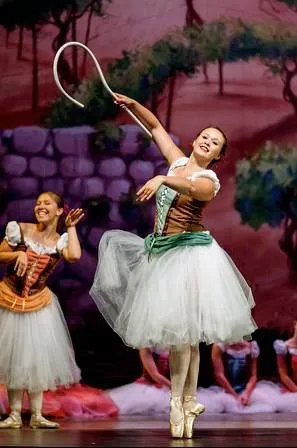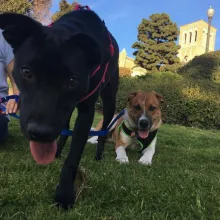Another Wavelength: Kira Hart

This month in Another Wavelength, we chat with 2nd year Ph.D. Student Kira Hart currently mentored by Russell Chipman.

Where are you from? A little bit of everywhere: I was born in Flagstaff, AZ but also lived in Santa Barbara, California and Hilo, Hawai’i! From age 13 onward I lived in Mariposa, California (a tiny town right outside of Yosemite National Park).
What brought you to study optics? I came into college as an astrophysics major because I loved math and space. I’ll always love astronomy, but by the end of my second year of college, I realized that, to me, the most exciting part of astrophysics is all the different, crazy, and creative ways information is extracted from light. I had always thought that astronomy was just taking images of cool looking nebulas. I was surprised to learn that our ability to understand the universe is propelled by this ever-evolving mission to extract every piece of information available out of every photon. From that point forward, I was hooked on optics. Despite having told my professors that, “I would never be interested in instrumentation”, I pivoted from studying the very large and far away to doing research in microscopy, building novel instruments to study the very small. I decided to pursue optics in graduate school because I wanted the opportunity to build the instruments that make the next generations of scientific discovery possible!
Who is your hero in science? My science hero(s) are the women of the Harvard Observatory who served as “computers” poring over photographic plates of stars to classify their spectra in the late 1800’s. Among these women is Henrietta Swan Leavitt who discovered the period-luminosity relation of Cepheid variable stars—a relationship that is one of the best measurements of stellar distances. In addition, Annie Cannon created the stellar classification system still used today. There are too many cool discoveries by these women to recount here (if you’re interested I recommend The Glass Universe by Dava Sobel). I am inspired by their dedication to science in a time when they received so little recognition for their work and so little opportunity to pursue it. Whenever I get frustrated or discouraged I like to think about their story and remember that passion and perseverance go a long way.
Describe your research in 20 words or fewer. I’m designing a long-wave infra-red channeled spectro-polarimeter to measure the size and shape of cloud ice particles.
Describe your research in 200 words or fewer. I am working with Dr. Russell Chipman (as well as some fantastic undergraduate students) in the Polarization Lab on a NASA Goddard Space Flight Center project called Sub-mm Wave and Infra-Red Polarimeter (SWIRP). The Polarization Lab’s contribution is a compact (100 mm long) polarimeter to measure linear polarization as a function of wavelength in the long-wave infra-red (LWIR) which will be integrated into the proposed SWIRP satellite. These measurements will provide much-needed information about the size and shape of ice cloud particles, which will improve climate models.
The compact instrument is reliant on the concept of a channeled polarimeter: polarization information is encoded into intensity fringes at the detector. The degree and angle of linear polarization is then retrieved through a data reduction model (a lot of linear algebra). Working in the LWIR is a fun challenge as we are limited by available materials; I’ve been exploring using unconventional optical materials like Tellurium. We’re also doing a lot of work calibrating thermal cameras for spectroscopy applications.
Name three neat facts about you.
-
I have 2 dogs named Washington and Jefferson whom I love very muchImage

- In my free time, I serve as a new chapter advisor and national volunteer for Phi Sigma Rho (a national sorority for women in STEM, I was a member at UCLA). I am very passionate about the retention of undergraduate women in STEM fields, and I love having the opportunity to work with these amazing undergraduate women.
- I’m a dancer! While I don’t dance as much as I used to, dance was my life from ages 3-18. The Nutcracker is my favorite ballet and over the years I’ve danced nearly every role in the show.
